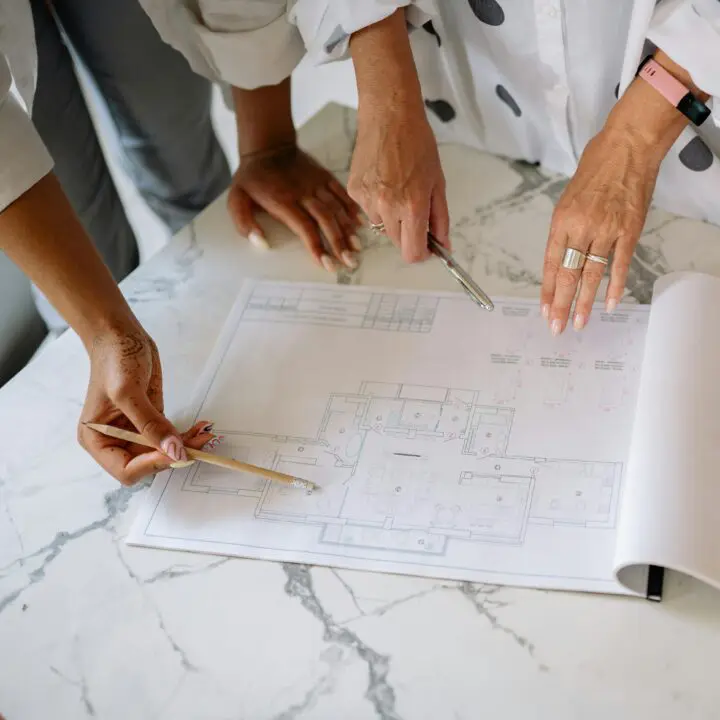The Reality of Virtual Architectural Practice
A webinar, Virtual Architectural Practice—An Alternate Reality, presented by the AIA Trust in partnership with the AIA Practice Management Knowledge Community, showcased current virtual practitioners, a legal expert, and an insurance expert who shared their insights in a 90‑minute session.
Text
A webinar, Virtual Architectural Practice—An Alternate Reality, presented by the AIA Trust in partnership with the AIA Practice Management Knowledge Community, showcased current virtual practitioners, a legal expert, and an insurance expert who shared their insights in a 90-minute session. The webinar was designed to help you understand the many benefits of a virtual practice approach as well as the risks you’ll need to manage so that you can find out what a virtual practice may mean for you.

Listen to the full webinar or download the slides.
Webinar participants raised additional questions about virtual practice, answered by speakers Peter Macrae, AIA, a successful virtual practitioner, and by Chuck Heuer, FAIA, an attorney, as follows:
How are software licenses handled? Does each team member maintain their own? What software is used – Revit, ArchiCAD?
Peter: As soon as the collaborators formed their own separate companies, they took on the responsibility for their own CADD software…we use mostly AutoCAD but have done a few projects in REVIT.
Chuck: Everyone having their own licenses is absolutely the best approach. AutoDesk makes it an explicit “profit center” to pursue unlicensed use of AutoCAD and other of their software. The consequences can be VERY expensive.
Does this virtual architectural practice option apply to large scale long term project types rather than typically quick turn-around retail projects? – Lexi
Peter: We have done several, larger ground up projects…some have taken a couple of years to complete and we have worked in both the private and public sectors. All while collaborating virtually.
Would you be willing to share figures regarding “churn” of consultants?
Peter: I have only had one consultant leave the group in nearly 8 years now…but he is still a colleague and a friend – he just didn’t fit the model.
Being a virtual practice is great, but how much time did you spend traveling across the country, Peter, to meet with clients face-to-face, present to government entities, etc. We know that some clients are more tech savvy than others?
Peter: The only traveling I have done for projects in 7+ years is for a few initial “meet and greet” meetings prior to being hired. No Client has ever asked me if they could come by our office or how many people are on our staff. There are not any “tech savvy” requirements for clients…only use of e-mail.

What percentage of consultants are not based in the United States?
Peter: None for me…I tried “off-shoring” early on…didn’t work except to take off redlines.
What about the concept of “under direct supervision”?
Peter: I require all my consultants to copy me on all project related e-mail correspondence…and I ask the clients to do the same. so, I monitor the course of the work for all projects from start to finish as well as review phase submissions of drawings throughout the project. It is actually very “hands on”…they are just “Virtual Hands”.
Now, compare that to working in a large, architecture-only firm of 500 people where only one, 51% Owner/Principal has the license in a particular state and signs/seals all of the work in that state for the entire firm: How much “direct supervision” do you think this licensed principal has? I know just how little – because I have worked in several such firms.
Chuck: The concept is that a licensed architect must have “control” over the content of documents that they stamp. Such control can be exerted over employees OR consultants. As long as the consultant has a direct contract with the licensed person/firm and that person/firm can control the results of the consultant’s work, I believe that the “direct supervision” test is met.
Peter’s example suggests that, in fact, principals in traditional firms often don’t actually exercise direct supervision and control. The point is, however, that they have the legal right to direct and control the work. And, the people in a traditional firm are generally employees.
Worker must be free from “employer’s control & direction in performing the services – is in direct conflict with the practice of architect and “under direct supervision” – Please comment.
Peter: Not if the contractors have their own separate companies and are contracted for on a project by project basis supervision.
Chuck: The control referred to in this context is much broader than the control referred to with respect to licensing. This is not a licensing issue but one to determine “employment” status. This is not just control over results, but also over means and methods, in a sense.
If an architect hires an independent contract draftsman, does that make the contractor an employee in the eyes of the court or IRS?
Chuck: The presumption would be “yes” unless that draftsman has formed his/her own corporation or LLC. To avoid uncertainty, either require that they do so or treat them as an employee with tax withholding, etc.
Please address how construction phase services are provided in a virtual practice.
Peter: I never liked the idea that most firms for which I have worked in my career accepted that they would always lose money during the CA Phase in lump sum contracts; therefore, now in my company, we only offer CA services on an hourly basis so not only do we make money, but we are only called when they need us (for example, I never thought it made any sense for my PM to tell a third-generation ceramic tile contractor how to put down Ardex).
If we need to travel to the jobsite, we are there – otherwise, we address questions from the field with the aid of photos, videos, and live streaming.
Chuck: Active involvement in construction contract administration (CCA) is actually a good risk management strategy. If you are “on call,” the client will only call when a problem develops. You will not know what preceded and caused the problem. Underlying construction may be built over. Of course, the Contractor will claim design error. If you are not present, you will be the “goat” for every problem. Further, you will have no chance to be pro-active and catch or prevent contractor errors.
What has been the most significant team communications challenge you’ve faced, and what was the resolution?
Peter: Designing a project in real time, using “Virtual Meeting” between myself and my 3D modeler where I sketched and critiqued and he built the model on the site in front of my eyes…challenging, yes…but amazing.
What social media works best for architects?
Peter: LinkedIn, Alignable, and other business/professional networks. I personally reserve Facebook for family and friends, and I have recently learned how to disable all political and undesirable posts which is very nice.
How would a virtual practice entity interview for a project?
Peter: We do not interview (and haven’t had to interview in nearly 8 years); everything is by referral or being “found virtually.”

How do you find existing firms that are using this business model?
Peter: They have found me. I once had the principal fly from Phoenix AZ to Columbus just to meet and discuss how we could “collaborate virtually”. I never did understand why the face-to-face was necessary, but that was his call.
How would you address a client who is interested in meeting in person? Do you (or would you) rent a meeting space? Is a virtual practice not a good fit for some clients/project types?
Peter: We always meet in their office if they insist on a face-to-face meeting.
We have not found a project type that is precluded by the “Virtual Model”, but it is much tougher with Public Work. However, we did about 10 projects with a university during one calendar year; we simply contracted with the D/B contractor and let them deal with the university architect’s office. We just held creative meetings with the user groups and made money!
What is the value-proposition for a client to choose a virtual practice–are the professional fees less?
Peter: This is my favorite question from the webinar. From day one we have set our fees according to their current market place value. We have no desire to be the “low cost alternative”. With no overhead, we make more profit–so why in the world would we do anything else? Why damage our entire profession by cutting our fees just because we are “operating virtually” in lieu of the traditional “bricks-and-mortar” model? Profit is not a dirty word in business, and the “Business of Architecture” is certainly no different!
Do you have any virtual independent contractors that you have only met online? How do you manage those situations?
Peter: Yes, several…I only ask them to tell me (in addition to sending me their resume) what it is that they “think they do best” and what is it that “they like to do best”–and it is always the same thing. They are managed just like all other contracted collaborators–absolutely no difference!
Does Design-Build work differently regarding liability?
Chuck: If the lead “virtual practice” firm is under contract to a D-B contractor, there really is no difference compared to working for any other Owner/Client. Just be cognizant that your client is the Contractor NOT the Project Owner.
Can non-billable costs, like research, be recaptured?
Chuck: Indirects are paid for out of profit, just like in a traditional firm.
What is the appropriate level of interface between a virtual subcontractor and client?
Peter: our contracted project managers are fully empowered and trusted to manage the projects and the clients. I try hard never to undercut them. If I have a question while monitoring the project e-mail correspondence, I will always call the project manager first, offer my suggestions and empower them to resolve the issue directly with the client.
Chuck: Just realize that the actions of the “Project Manager” will make the lead (Peter, in his example) liable to the client if the actions of the project manager are wrongful or negligent.
Follow up comment on the mentoring of persons virtually, can be at any level of expertise. The mentor should establish a schedule of regular meetings with specific agenda items, ways to measure progress, and time to discuss issues. Keeping an open mind and open communication is essential for a successful relationship.
Peter: Agreed!
Virtual Architectural Practice—An Alternate Reality
AIA Trust Guide to Virtual Practice



